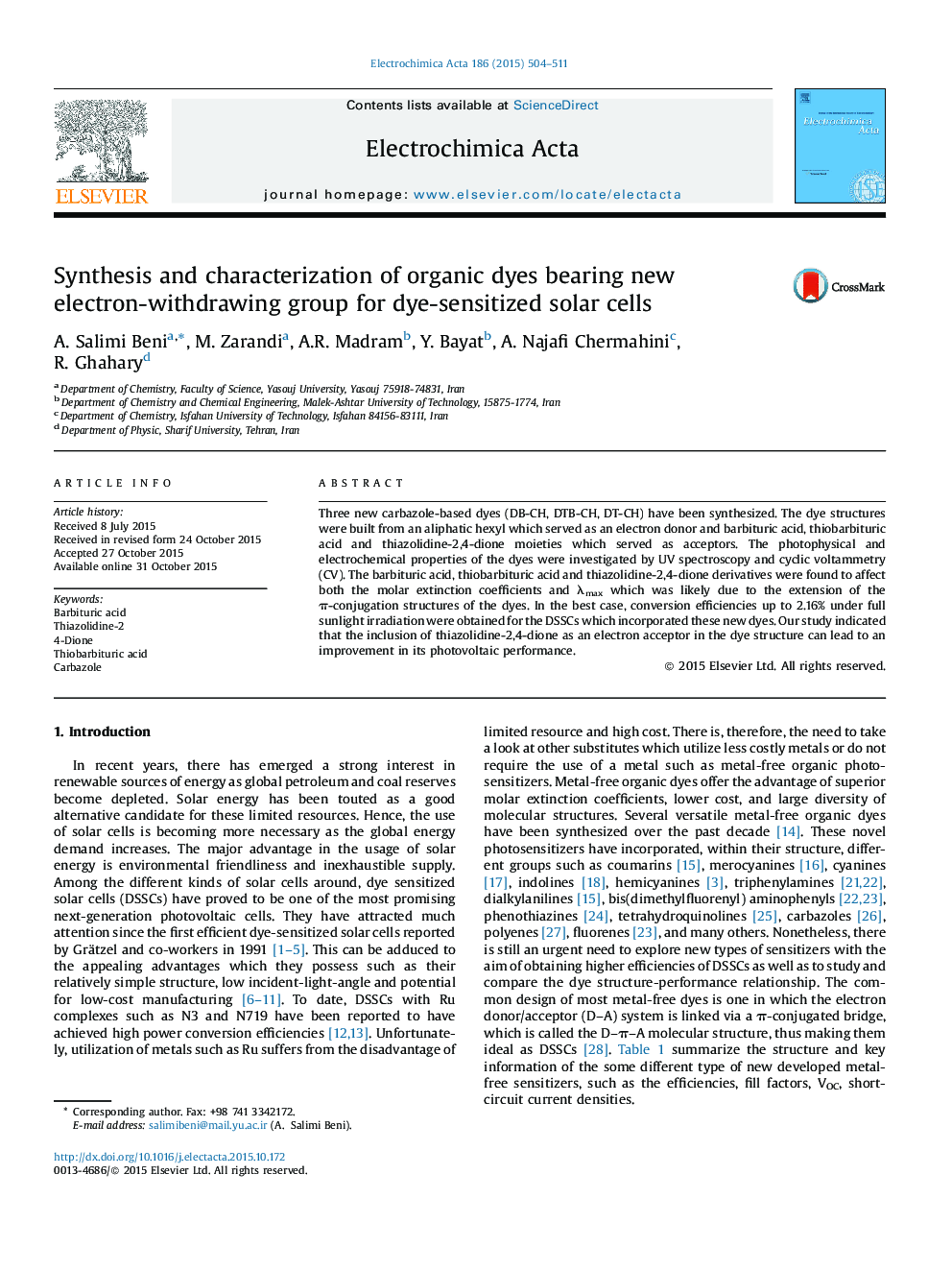| Article ID | Journal | Published Year | Pages | File Type |
|---|---|---|---|---|
| 183596 | Electrochimica Acta | 2015 | 8 Pages |
Three new carbazole-based dyes (DB-CH, DTB-CH, DT-CH) have been synthesized. The dye structures were built from an aliphatic hexyl which served as an electron donor and barbituric acid, thiobarbituric acid and thiazolidine-2,4-dione moieties which served as acceptors. The photophysical and electrochemical properties of the dyes were investigated by UV spectroscopy and cyclic voltammetry (CV). The barbituric acid, thiobarbituric acid and thiazolidine-2,4-dione derivatives were found to affect both the molar extinction coefficients and λmax which was likely due to the extension of the π-conjugation structures of the dyes. In the best case, conversion efficiencies up to 2.16% under full sunlight irradiation were obtained for the DSSCs which incorporated these new dyes. Our study indicated that the inclusion of thiazolidine-2,4-dione as an electron acceptor in the dye structure can lead to an improvement in its photovoltaic performance.
